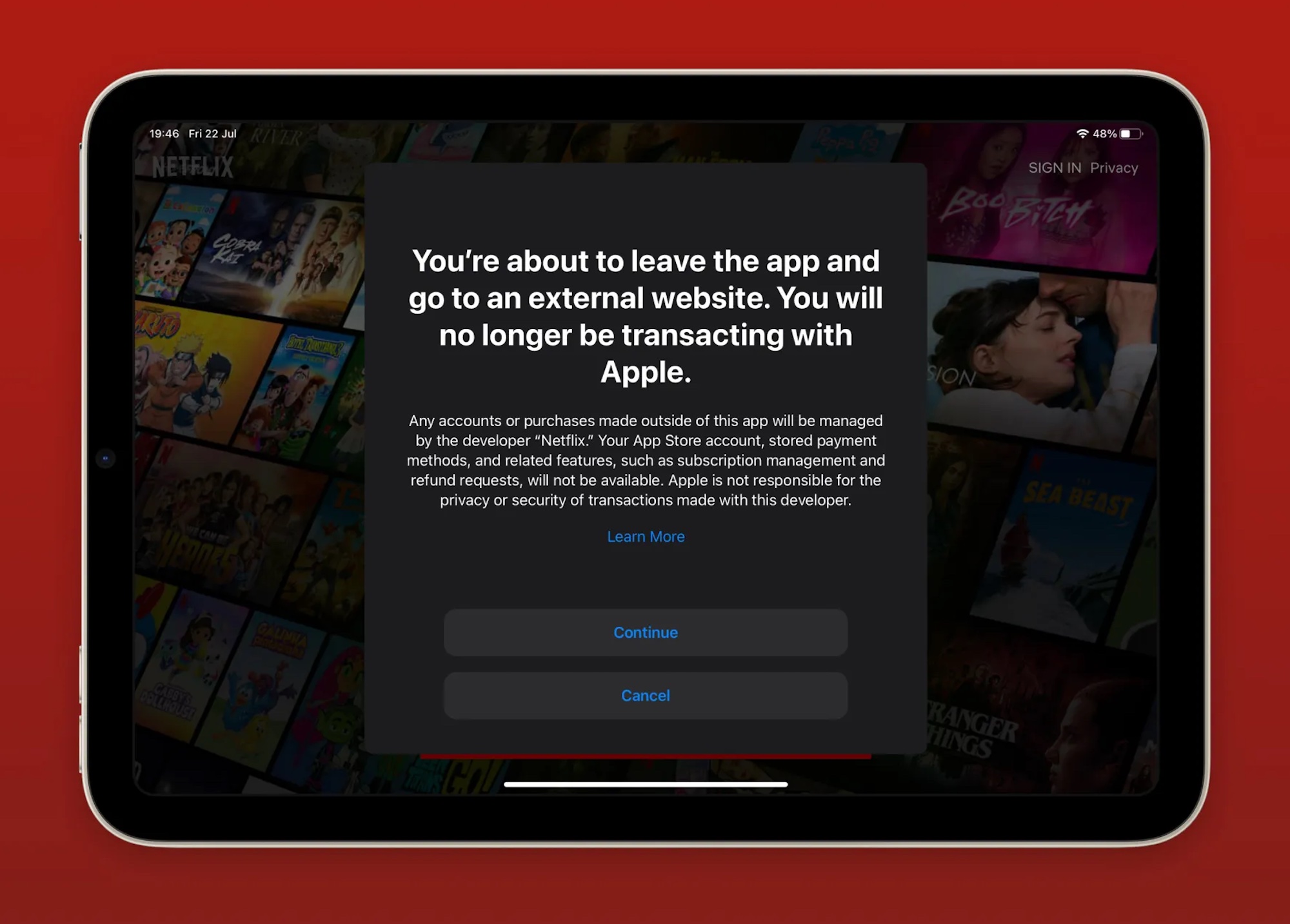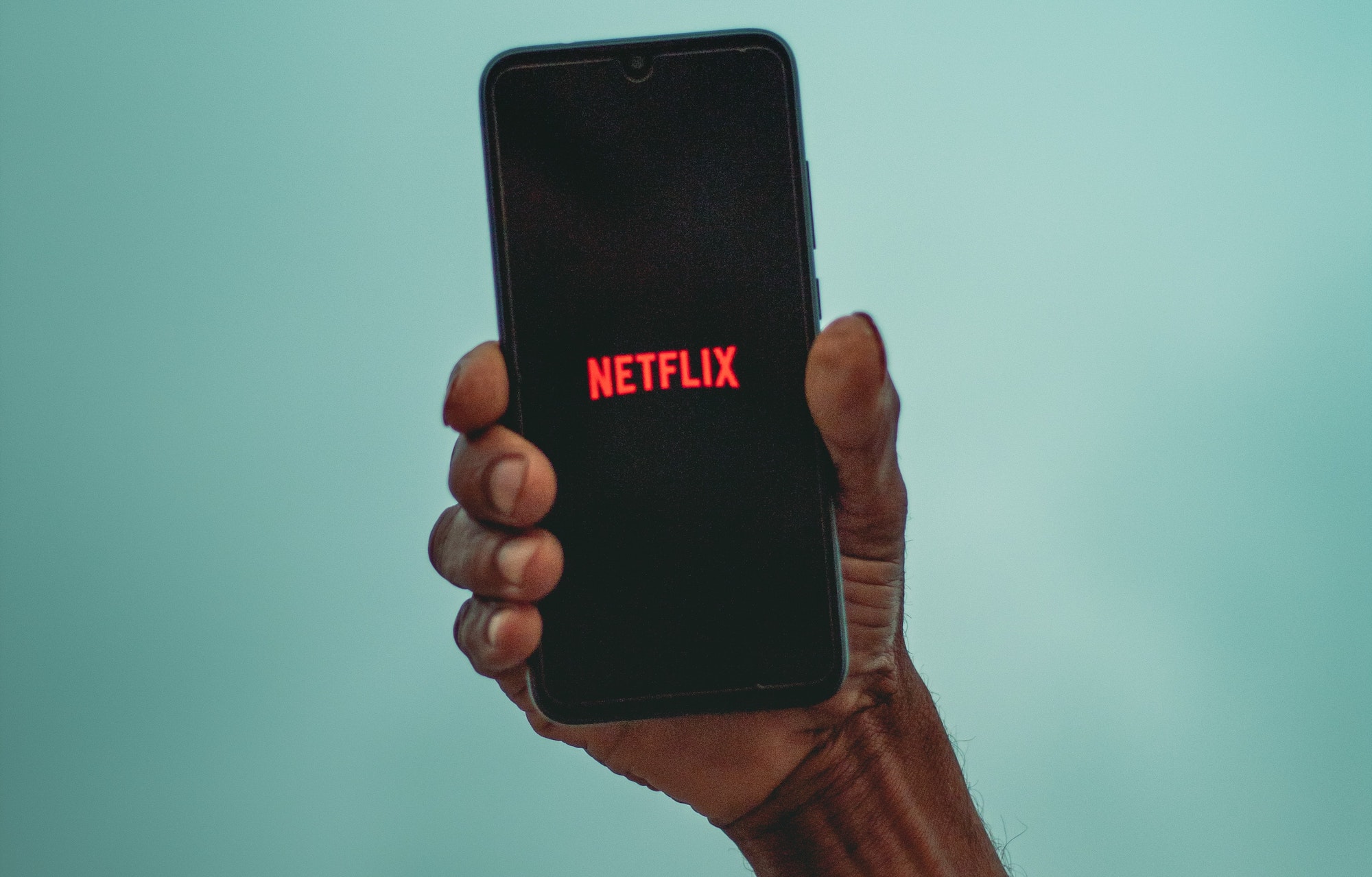It’s been
more than a decade since Apple first allowed news publishers (and others) to sell a subscription within their iPhone or iPad apps. And one complaint has reigned supreme through all that time: It required your users to subscribe
through Apple, not directly to you. That cost the publisher
money: a full 30% of your subscriber’s payment, month after month, year after year. And it cost the publisher the
relationship: limiting the ability to target offers, gather user data, and otherwise fine-tune the connection between reader and outlet.
Apple’s heard those complaints and made moves around the edges to make their offering more appealing — mostly by
lowering the revenue cut it takes under certain circumstances. (Most of the credit here belongs to the videogame company Epic, which is
fighting a far higher-dollar battle against Apple’s App Store policies, and international regulators in countries including
Japan and
the Netherlands.)
But the important step came last fall, when
Apple announced it was letting a certain class of iOS apps, including news apps, avoid its in-app payment system altogether. Apple would allow so-called reader apps — “
apps that provide one or more of the following digital content types — magazines, newspapers, books, audio, music, or video — as the primary functionality of the app” — to use an exciting new technology called a
link, allowing apps to direct users to the publisher’s website to subscribe.
Sending a potential subscriber to your website is a loss in terms of ease of use — Apple’s one-click subscriptions are pretty nice — but an unqualified gain financially. You keep what used to be Apple’s share of your subscribers’ money, and now you own the relationship.
The new policy was announced last September, but it didn’t go into effect until March 30, and uptake has been relatively slow. But now, three months later, we have the first big example of a “reader app” pushing a non-Apple way to subscribe: Netflix. Here’s Filipe Espósito for 9to5Mac:
As noted by multiple users and also confirmed by 9to5Mac, the Netflix app now uses the new iOS API for reader apps that takes the user to an external website before making a subscription. It’s uncertain when exactly Netflix began rolling out this option to iPhone and iPad users, but based on reports, the rollout now seems to be worldwide.
When you tap the subscribe button, a message says that “you’re about to leave the app and go to an external website.” The app also notes that the transaction will no longer be Apple’s responsibility and that all subscription management should be done under Netflix’s platform.
Netflix had stopped using Apple’s in-app purchasing way back in 2018, uninterested in sharing revenue with the phonemaker. Subscribing to Netflix on an Apple device meant going to netflix.com in a web browser. Now, though, the streamer can at least push people there within the app.

What does all this mean for news publishers with iPhone and iPad apps?

- Stop offering in-app subscriptions through Apple. The only reason left to give Apple 30% (or 15%) of your subscription revenue that its in-app subs system is super-easy to use. That’s no longer a good enough reason.
- Apply for approval to link to your own subscription interface. Yes, the ability to link to your own website is still not a right — it’s a privilege. You have to apply for the vaguely Orwellian “External Link Account Entitlement” first. There are a few requirements, which shouldn’t be a problem for most news publishers. The most important: A publisher may “not offer in-app purchases on iOS or iPadOS while using the External Link Account Entitlement.” In other words, you can use Apple’s system or your own system — but not both at the same time.
- Make your own mobile subscription system as easy to use as possible. This should already be a priority, no matter what Apple’s doing! If someone using a smartphone wants to give you money, you should make it as easy as possible! One suggestion: Start accepting Apple Pay on your website. It has long been against Apple’s rules to sell digital goods (like a subscription) inside an iOS app via Apple Pay. But on the web, you’re free and clear. For an iPhone user, Apple Pay is nearly as easy a process as an in-app subscription, and from a vendor’s perspective, it’s almost indistinguishable from a credit card payment.
- Continue testing a wide set of subscription offerings to see what works. Apple’s rigid in-app rules made it difficult to test different pitches to users. (First three months for 99 cents! $50/year for the rest of your life!) Smart publishers are already running frequent tests of this sort to optimize their offers; now those can be made to app users too.
News apps on phones and tablets haven’t been the revolution some expected a decade ago. Most people who download The Daily Gazette’s iPhone app are already familiar with the Gazette and its work. They’re probably either already subscribers or high-quality candidates to subscribe. So publishers are more likely to view their mobile apps as a tool for pleasing existing subscribers than for attracting new ones. That’s unlikely to change anytime soon.
But nonetheless, any of your subscription dollars currently getting Apple’s 30% haircut no longer have to. And rather than building a resource-intensive replacement, you can just use whatever system you have in place. Go save that money, and consider it an opportunity to ensure that your readers’ path to payment is as smooth as it can be — on any device.

